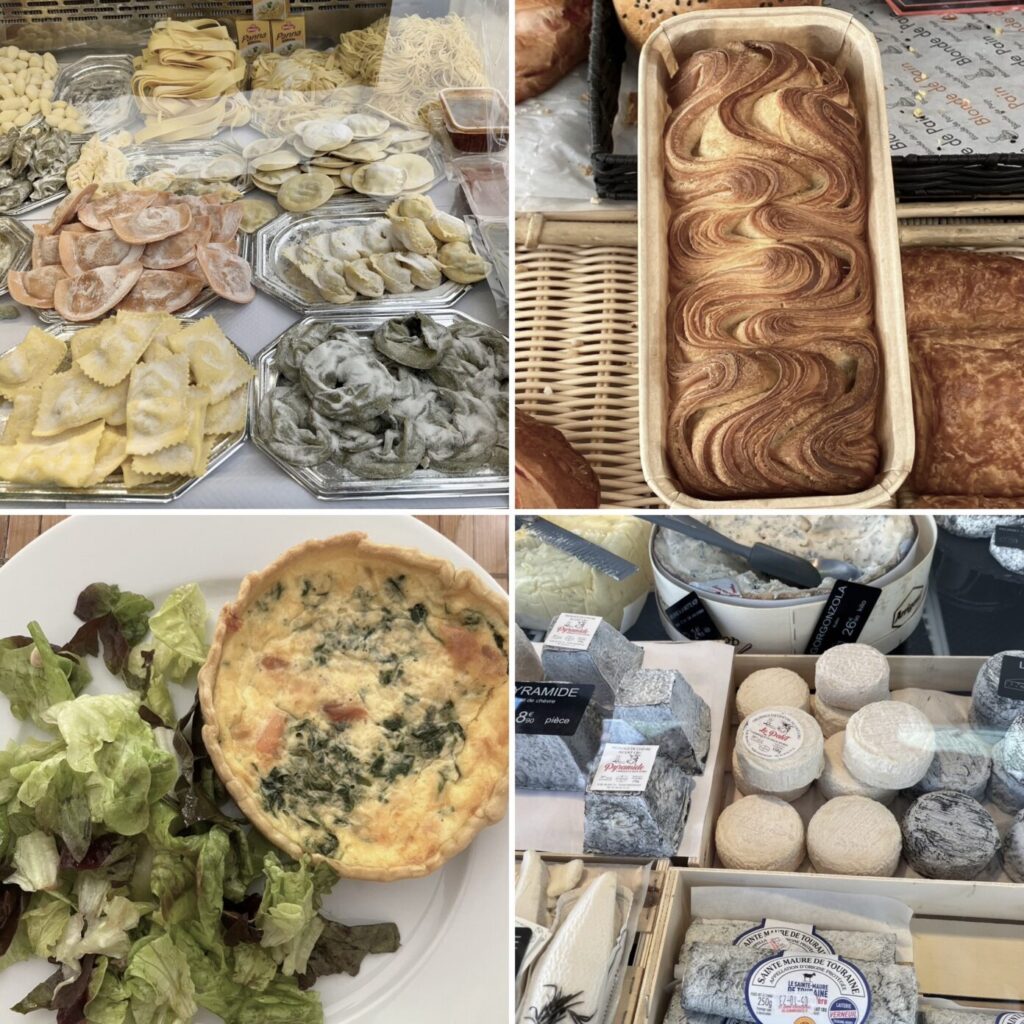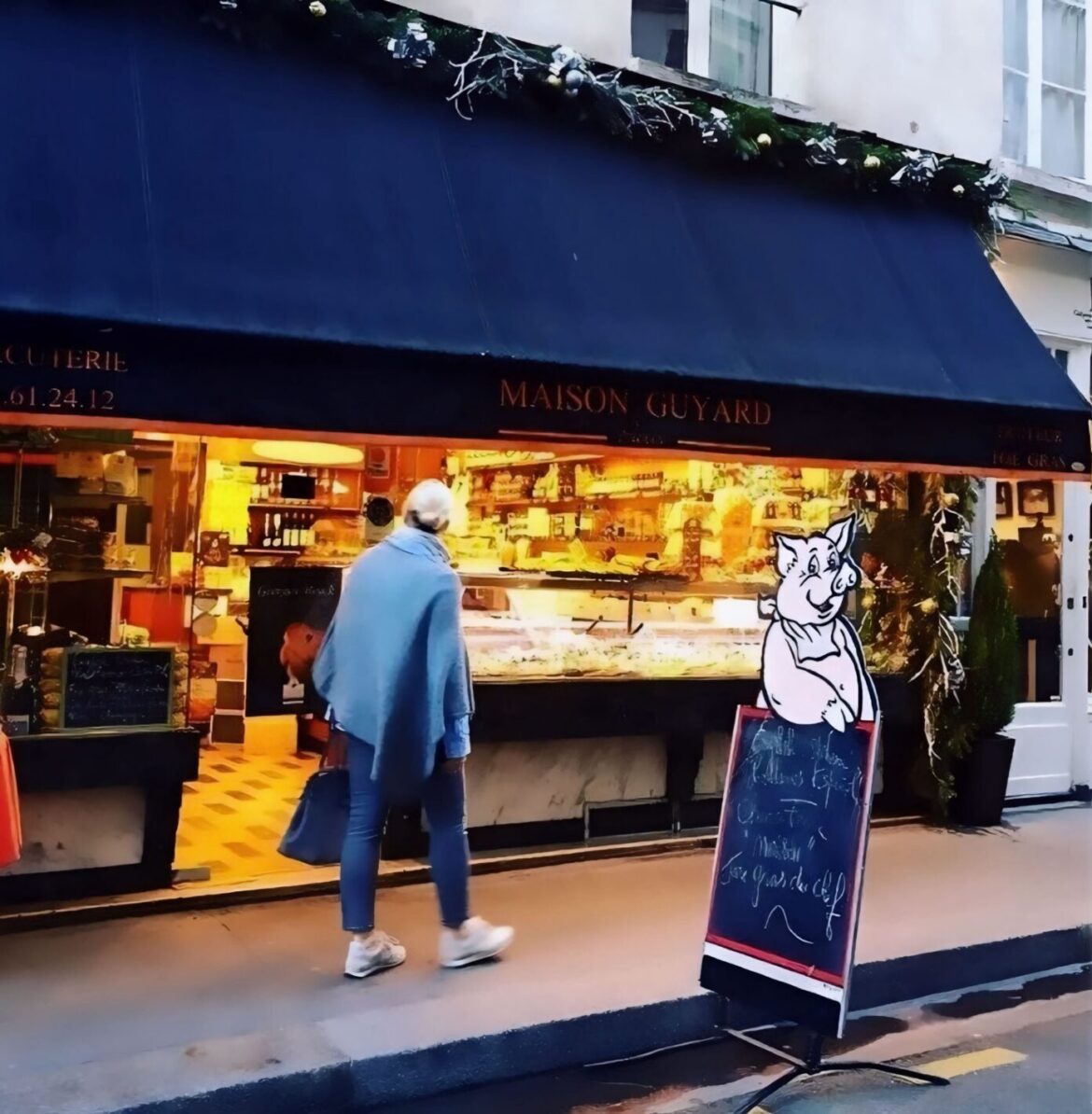Anyone who has been to Western Europe has likely experienced the food paradox. The mystery where despite indulging in the local foods (i.e., pasta and gelato twice a day in Italy, buttery pastries every morning in France), you return home lighter and stronger, and your cholesterol has dropped. Walking plays a big part, for sure, but arguably it’s the quality and customs around food in Europe that take hold and teach us how to eat in ways that are better for our overall health.
My Four Reasons for the French Paradox
After spending a month in France, I was stunned to discover I had lost ten pounds despite enjoying all the culinary pleasures of the country. I was eating every carb you can think of and drinking wine every day. The French paradox is real, and after living it for thirty days, these are my top four reasons why:
1. Governance
Food regulations are strict, and there is very little processed food available. Snack and beverage aisles are tiny, and while you’ll see the odd McDonald’s here and there, fast food is not a thing. There is even a baguette law, ensuring baguettes sold in boulangeries in France are made with only four ingredients (wheat flour, water, salt, and yeast). They cannot be frozen and must be made only on the premises.
Packaged food in grocery stores also has minimal ingredients; no fillers or chemicals, and there is far less sugar due in part to regulations and also to the French having a less-sweet inclined palette. In 2016, France implemented a front-of-package “Nutri-score” nutrition scale that indicates best to worst food choices, allowing consumers to decipher the quality and health of the product on the shelf.

Canada is implementing a similar front-of-package strategy in 2026 by adding warning symbols if a food is high in saturated fats, sugar, or sodium. France does an amazing job at governance when it comes to nutrition and makes sure fresh, whole, and organic (bio) food is readily accessible.
2. No Snacking
The French don’t snack between meals or at night. During my first grocery trip, I bought “Poulet” (chicken) flavored chips and single-serve chocolate mousse for fun and curiosity. They were delicious, but I quickly lost interest because I was eating everything I loved during mealtime: fresh baguettes, creamy cheese, fresh pasta, in-season produce. When you eat what you love and it’s fresh, whole food, you stop craving junk.
3. Portions
When I bought salmon to cook for dinner, it had been cut into single-serve portions, which were half the size of what they are at home. My Brie-covered steak was palm-sized and plenty. All that beautiful cheese from the market? So rich and creamy that a few pieces with a glass of wine were enough. The flavors are so rich and delicious in Europe that a little goes a long way—so, you’re eating less than you think.
4. Pleasure & Balance
The French eat for pleasure and take time enjoying their meals. There is no guilt, shame, or voids to fill with food because they eat what they want, within reason, and never feel deprived. They know how to find balance, offsetting a heavier meal with a lighter one and adjust accordingly. Eating what I wanted for a month—enjoying every bite, and not thinking about it—was extremely liberating.
 Favorites from the outdoor market in Fontainebleau, France / Photo collage courtesy of Kathy McLay
Favorites from the outdoor market in Fontainebleau, France / Photo collage courtesy of Kathy McLay
How Food Is Supposed to Taste
If you’ve ever had a Greek salad in Greece, you know it’s unlike anything you’ve had at home. The milk tastes different in Italy, which takes lattés to another level. In Spanish tapas bars, the jamon (ham) is shaved right in front of you, purer than anything bought in a deli. Beyond ultimate freshness and flavor, the food in Europe is also processed differently due to less strict pasteurization regulations and stricter farming practices.
According to Cleveland Clinic Functional Medicine Founder Dr. Mark Hyman, even the wheat is a different strain in Europe, containing less gluten and no glyphosate (a crop pesticide). This is why there are significantly fewer food allergy sufferers in Europe and why visitors can often indulge in food they can’t tolerate at home.
Continuing to Eat the French Way
After returning from France, I continued eating “the French way” by seeking out the best-quality, authentic baguettes and imported cheese I could find, eating in season, cutting portions, and not eating in between meals. I continued to lose a few pounds over the next few months and had found my new way to eat.
In parallel, a new list emerged of foods I enjoy most and tolerate best as I age (an ever-shrinking list!). Also, interestingly, I lost my taste for carbonated beverages and poultry while abroad, both of which were staples in my diet. My favorite go-to meals now include toasted sourdough bread topped with French cheese; brown rice pasta tossed with arugula, walnuts, and pecorino; or grilled salmon with rice and salad. Everything drizzled with good olive oil and seasoned with Himalayan sea salt.
My Current Grocery List
They say you end up eating roughly the same 10 things eventually, and if so, this is my current list, each item the best quality version I can find:
Sourdough bread (minimal ingredients)
Imported French cheese
Brown rice pasta (easier to digest)
Potatoes, rice and whole grains
Greens, vegetables, berries
Fish and a little meat
Imported olive oil, butter
Plain Greek or goat yogurt
Homemade granola (recipe here)
Coffee, tea, water, wine
While I strive to eat “the French way,” life tends to catch up, and old eating habits re-emerge. Looking at photos of the incredible meals and outdoor markets in France helps get me back on track, as well as remembering how good I felt eating that way. It takes work in our world of variety and convenience to tap back into that pure form of eating, but it’s not impossible, and, in the long run, it’s worth it
A Note from the Author: This article includes excerpts from previously published features originally published on Labadie Boutique’s Newsletter on Substack. To read the original publications, click here.
Connect with Kathy at labadieboutique@outlook.com and stay tuned for more of her contributions here at AGEIST.
Labadie Boutique’s Newsletter / Kathy’s Writing Portfolio / Labadie Boutique’s Instagram (@labadie_boutique) / Labadie Boutique’s Art Instagram (@labadie_art)
Don’t Miss


Dining and Cooking